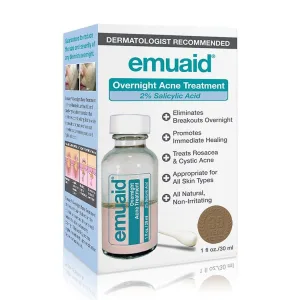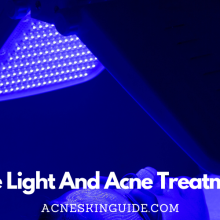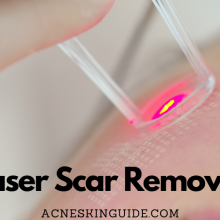Topical Retinoids for Acne – Tretinoin, Adapalene, and Beyond | ACneSkinGuide
Summary of Topical Retinoids for Acne
Topical retinoids have long been dermatologists’ go-to treatment for acne due to their ability to regulate skin cell turnover and reduce inflammation. Prescription retinoids like tretinoin (Retin-A), adapalene (Differin), tazarotene, and the newer trifarotene offer varying potencies and are tailored for different acne severities. While highly effective, they can cause dryness, redness, and an initial “purge” of worsening acne.
Over-the-counter options like retinol and retinaldehyde provide milder retinoid benefits. To minimize irritation, dermatologists recommend slowly introducing retinoids, buffering with moisturizer, and avoiding concomitant drying ingredients. Retinoids take 2-3 months to show visible improvement and 6+ months for full results. Beyond acne, they stimulate collagen for anti-aging effects. As research continues, new retinoid formulations aim to maximize efficacy while reducing irritation. With their multifaceted approach to unclogging pores and reducing inflammation, retinoids remain dermatologists’ powerful go-to acne solution.
Our Top 3 Recommended Acne Treatment Products

#1 Paula's Choice Acne Treatment
The 3-step kit features a cleanser and exfoliating solution with 2% salicylic acid, as well as a 5% benzoyl peroxide treatment that effectively treats even severe acne, though the benzoyl peroxide can be drying. The kit delivers serious results for stubborn acne, despite its slightly higher price point compared to drugstore options. Check The Price Now

#2 EMUAID Overnight Acne Treatment
The EMUAID Overnight Acne Treatment features a two-phase solution, with an exfoliating first step to unclog pores and an intensive treatment gel that rapidly reduces inflammation, redness, and swelling of even severe, cystic breakouts, despite a slightly medicinal scent and higher price point compared to other options. Check The Price Now

#3 Differin Acne Treatment
The Differin 0.1% adapalene gel normalizes cell turnover and unclogs pores to effectively treat acne, though it requires 2-3 months of consistent use with an adjustment period of dryness and purging before seeing maximum results, which are worth the effort for clearer, more even-toned skin. Check The Price Now

Battling Acne? Topical Retinoids May Be the Solution
The Power of Retinoids
When it comes to treating acne, topical retinoids have been dermatologists’ go-to heavy hitters for decades. And for good reason – these vitamin A derivatives get to the root of acne by regulating skin cell turnover and reducing inflammation. Whether you’re dealing with inflammatory bumps or clogged pores, retinoids can be a powerhouse solution.
Prescription Retinoid: Tretinoin
At the prescription level, tretinoin (sold as Retin-A and generic tretinoin) has long been one of the most widely used retinoids. This multitasking topical not only helps unclog pores and clear existing blemishes, but it also helps prevent new acne from forming. Tretinoin comes in varying formulations like creams, gels, and micro-encapsulated varieties.
Tretinoin’s Downsides
While highly effective, tretinoin does come with some downsides in the form of potential dryness, redness, and irritation – especially when you first start using it. Many experience a “purge” of worsening acne before seeing improvements. To minimize these side effects, dermatologists recommend starting with a lower strength tretinoin and slowly increasing it as your skin builds tolerance.
Prescription Retinoid: Adapalene
For those seeking a potentially gentler prescription option, adapalene (Differin) shares many similarities with tretinoin but tends to be less irritating for some users. Like tretinoin, it comes in cream and gel formulations to help unclog pores and reduce inflamed acne lesions. Adapalene is often touted as a good “starter” retinoid to build up tolerance before potentially transitioning to tretinoin.
Prescription Retinoids for Severe Acne
For more severe cases of inflammatory acne, tazarotene (Avage, Fabior) may be the most effective prescription retinoid. Studies show it can outperform tretinoin, but it also tends to be more drying and irritating. Your dermatologist may recommend tazarotene as a spot treatment or short course if other retinoids aren’t providing enough clearing.
The Newest Prescription Retinoid
The latest addition to the prescription retinoid lineup is trifarotene (Aklief). Released in 2019, it’s showing efficacy on par with tretinoin for treating mild to moderate acne, with potentially fewer irritating side effects. As one of the newer retinoids, more research is still emerging on trifarotene’s ideal use cases.
Over-the-Counter Retinoid Options
While prescription retinoids are considered the gold standard, several over-the-counter retinoid options have emerged as well. Retinol is the most common OTC retinoid, but it’s less potent than prescription formulas. You’ll find retinol in serums and creams in concentrations typically ranging from 0.3% to 1%. Retinaldehyde sits between retinol and tretinoin in strength, which can make it a good intermediate step after building tolerance to retinol.
Gentle OTC Alternatives
For those seeking a gentler alternative, bakuchiol and rosehip seed oil provide retinol-like benefits with much less potential for irritation. These plant-based ingredients help promote skin cell turnover and have anti-inflammatory effects, making them optimal for sensitive skin types.
Managing Retinoid Irritation
No matter which retinoid you use, some side effects like dryness, redness, and peeling are extremely common in the first several months – often referred to as the “retinoid uglies” or “retinoid dermatitis.” During this adjustment phase, your acne may even look worse temporarily due to the accelerated skin cell turnover before seeing improvements. This “purge” phase can last 4-6 weeks.
Minimizing Irritation Tips
To minimize irritation, dermatologists suggest starting with lower strengths, applying a pea-sized amount, using a buffer like a gentle moisturizer beforehand, and considering “short contact therapy” by rinsing after 30-60 minutes. Building up a tolerance slowly is key.
Combining Retinoids Wisely
It’s also recommended to avoid using retinoids at the same time as overly drying products like benzoyl peroxide, alpha hydroxy acids, or retinol. However, alternating retinoids with these other acne treatments can increase their cumulative efficacy.
Patience is Key for Results
As with any skincare treatment, it takes consistency and patience to see the payoff from retinoids. While they start working immediately to prevent new acne formation, visible improvements in active blemishes usually take 2-3 months, with full results after 6 months or more of regular use.
Bonus Anti-Aging Benefits
Beyond their acne-fighting prowess, retinoids provide the added bonus of anti-aging benefits by stimulating collagen production and improving skin texture over time. So you’re getting clearer, smoother skin in one product.
Selecting the Right Retinoid
When selecting a retinoid, your dermatologist will consider factors like your skin type, acne severity, and sensitivity level. Different retinoids may be better suited for certain acne types as well. For example, tretinoin and tazarotene are especially helpful for treating inflammatory papules and pustules, while adapalene excels at clearing blackheads and non-inflammatory comedonal acne. Seeking professional guidance is crucial for getting on the right retinoid treatment plan.
Future of Retinoid Innovation
While the current lineup of retinoid products is already robust, continued research shows promise for even more innovative retinoid formulations on the horizon. Scientist are exploring new methods of stabilizing retinoids and delivering them to the skin in a way that minimizes irritation while maintaining efficacy. There’s also potential for combination products layering retinoids with other synergistic acne-fighting ingredients.
Safety Precautions
For now, whether you opt for a prescription or over-the-counter retinoid, vigilant sun protection is a must to prevent increased sensitivity. And certain safety precautions apply around use during pregnancy and breastfeeding.
The Retinoid Future Looks Bright
With their ability to tackle acne from multiple angles – unclogging pores, reducing inflammation, and prompting cellular turnover – retinoids remain a trusted first-line defense for dermatologists treating acne-prone skin. While not without potential downsides like irritation, the skin-clearing results make retinoids well worth persisting through the temporary adjustment phase for many people. As this acne-fighting powerhouse category continues evolving, the future looks bright for even more innovations in retinoid therapy.
FAQs and Answers
Can you use retinoids while pregnant or breastfeeding?
No, it is generally not recommended to use retinoids during pregnancy or while breastfeeding. Here are some key points about retinoid use and pregnancy/breastfeeding:
Pregnancy:
- Oral retinoids like isotretinoin (Accutane) are absolutely contraindicated during pregnancy due to high risk of causing severe birth defects.
- Topical retinoids like tretinoin are better studied and considered lower risk than oral retinoids, but they can still potentially expose the fetus to the medication.
- Most dermatologists advise discontinuing use of topical retinoids for the entire duration of pregnancy out of an abundance of caution.
Breastfeeding:
- Very little data exists on whether topical retinoids are transferred through breastmilk or not.
- Out of caution, the general recommendation is to avoid using topical retinoids while breastfeeding until more research is available.
- Some doctors may allow very short-term, minimal use of a low-concentration retinoid while pumping and discarding milk. But breastfeeding is usually avoided.
The risks of retinoid exposure are highest during the first trimester when fetal organ development occurs. However, most sources recommend discontinuing all retinoid use before attempting to conceive and avoiding them throughout pregnancy and breastfeeding to eliminate potential risks entirely.
How do retinoids compare to other acne treatments like benzoyl peroxide, salicylic acid, or antibiotics?
Retinoids work differently than other common acne treatments like benzoyl peroxide, salicylic acid, and antibiotics. Here’s a quick comparison:
Benzoyl Peroxide:
- Antimicrobial that kills acne-causing bacteria
- Works well for inflammatory acne lesions
- Can be drying and irritating, especially at higher strengths
- Often used in combination with retinoids
Salicylic Acid:
- Beta hydroxy acid that helps unclog pores
- Best for non-inflammatory comedonal acne
- Can cause dryness, especially around the mouth/chin
- Pairs well with retinoids to treat multiple acne types
Antibiotics (oral and topical):
- Help reduce acne-causing bacteria
- Treat inflammatory lesions like papules and pustules
- Often prescribed short-term with a retinoid
- Risk of antibiotic resistance with long-term use
Retinoids:
- Normalize skin cell turnover and prevent clogs
- Treat both inflammatory and non-inflammatory acne
- Take time to see full effects (3-6+ months)
- Side effects like irritation, dryness, purging
Retinoids work alongside these other treatments by addressing one of acne’s main causes – abnormal keratinocyte shedding that clogs pores. They are a long-term treatment solution while antibiotics or BP tend to be shorter courses.
For moderate to severe acne, dermatologists often prescribe a retinoid along with benzoyl peroxide or an antibiotic to hit acne with multiple mechanisms of action.
What is the best way to introduce a retinoid into your skincare routine?
Here are some tips for the best way to introduce a retinoid into your skincare routine:
Start Low and Slow
Begin with the lowest concentration retinoid formulation (0.025% tretinoin, 0.1% adapalene, etc). Apply a pea-sized amount 1-2 times per week to build up tolerance before increasing frequency.
Buffer It
On nights you use the retinoid, first apply a gentle, non-irritating moisturizer and allow it to dry. Then apply a thin layer of the retinoid on top of the moisturizer to help buffer any potential irritation.
Short Contact Therapy
For the first few weeks, leave the retinoid on your skin for only 20-30 minutes before rinsing it off. This minimizes exposure until your skin adjusts.
Alternate Nights
Retinoids can be extremely drying. Alternate nights with the retinoid and a plain, gentle moisturizer to give your skin a break in between applications.
Avoid Other Irritants
Don’t combine retinoids right away with other potentially irritating ingredients like benzoyl peroxide, AHAs, astringents etc. Stick to just gentle cleansers and moisturizers until your skin acclimates.
Nightly Routine
Eventually work up to applying the retinoid every night after cleansing and allowing face to fully dry. Follow with a fragrance-free, non-comedogenic moisturizer.
Be Patient
Retinoids can actually cause an “purge” of emerging whiteheads for 4-8 weeks before visible improvement. Stick with it through the retinization process for best results.
By introducing retinoids slowly, buffering them properly, and keeping the rest of your routine super gentle, you can minimize the notoriously unpleasant adjustment period.
Are retinoids effective for all types of acne – hormonal acne, cystic acne, blackheads, etc?
Retinoids can be effective for treating various types of acne, but some retinoids may work better than others depending on the specific acne presentation. Here’s a breakdown:
Hormonal Acne:
Retinoids can help treat hormonal acne, which often presents as deep, painful cystic blemishes and persists in adult women. However, they may not be as effective alone since hormones drive this type of acne. Retinoids are often combined with other treatments like birth control pills or spironolactone.
Cystic Acne:
The strongest retinoids like tretinoin and tazarotene tend to work best for severe, cystic nodular acne. Their anti-inflammatory properties can help reduce swelling and severity of large, stubborn breakouts.
Blackheads/Whiteheads:
Retinoids help keep pores clear by regulating skin cell shedding. Adapalene in particular excels at treating non-inflammatory comedonal acne like blackheads and whiteheads.
Inflammatory Papules/Pustules:
Tretinoin, tazarotene, and trifarotene are extremely effective for inflammatory acne lesions like red, swollen papules and pus-filled pustules.
In general, the stronger prescription retinoids perform better against more severe, inflammatory acne while OTC retinoids like retinol provide more mild benefits for light acne or blackhead/whitehead prevention.
For best results, retinoids are often combined with benzoyl peroxide or topical antibiotics to simultaneously treat multiple acne mechanisms like bacteria, inflammation, and clogged pores.
At what age should you start using a retinoid for acne?
There are no definitive age guidelines for when to start using retinoids for acne, as it depends on the individual case. However, here are some general recommendations from dermatologists:
Teenage Years:
- Retinoids are commonly prescribed for teenage acne, especially if over-the-counter treatments are not providing enough improvement.
- Doctors may start with lower concentration retinoids like adapalene or retinol in the early teen years.
- Stronger prescription retinoids like tretinoin are more likely prescribed for severe teenage acne around age 15-16.
Early 20s:
- Many dermatologists recommend starting a retinoid in the late teens/early 20s as a preventative measure if acne persists.
- This can help get acne under control before scarring develops.
- Tretinoin is commonly prescribed in this age range.
Late 20s and Beyond:
- Retinoids may be started at any adult age for active acne.
- They are particularly helpful for hormonal acne flare-ups in adult women.
- Dermatologists often pair retinoids with other acne treatments in this age group.
The main factors are acne severity and failure of other therapies. Mild teenage acne may just use OTC retinols first, while persistent moderate-severe acne at any age often calls for prescription retinoids. Earlier treatment can help prevent acne from worsening and scarring over time.
Retinoids are generally safe to use as early as the pre-teen years under a dermatologist’s guidance. But they require slow introduction and monitoring in younger patients. Consistent use over years provides the maximum acne prevention benefits.






